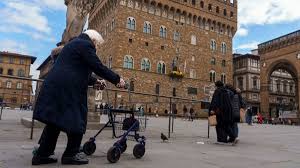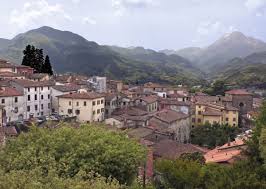What’s behind Italy’s ageing problem?

Rome: Italy’s ageing problem is starting to take a toll on the country’s world-famous ‘dolce vita’.
The country’s growing number of pensioners isn’t nearly matched by the number of newborns, and efforts by Giorgia Meloni’s right-wing government to boost birth rates have so far failed to turn the tide on Italy’s demographic decline.
According to the latest data from Eurostat, Italy is the oldest country in the European Union, with an average median age of above 48. Together with Portugal, Italy has the highest percentage of residents older than 65 at 24%. That’s roughly one in four.
This increase reflects a European-wide trend, with the EU experiencing an overall rise in its median age to 44.5 years old. The number of elderly people now represents more than one-fifth of the bloc’s population.
“However, what’s even more significant is the ageing trend within Italy’s older population itself,” Cecilia Tomassini, professor in Demography and Social Statistics at the University of Molise, told Euronews.
“Specifically, the proportion of individuals aged 80 and above has risen to 7.7% of the total population, a notable increase from a mere 3.3% recorded in 1991,” she added.
People wait to be evacuated from Giampilieri near Messina, southern Italy, Saturday, Oct. 3, 2009.
“Essentially, while the overall population increased by 3.4% since 1991, the segment aged 80 and above more than doubled during the same period.”
But the Italian ‘nonni’ – well-beloved figures in the country as well as abroad – are not the problem, Giovanni Lamura from Italy’s National Institute of Health and Science on Ageing told Euronews.
“To have people live longer should be a goal on the political agenda of any country’s government,” he said. “The problem is that fertility rates in Italy are low, we have fewer and fewer children.”
How has Italy gotten so old?
The reason for Italy’s ageing population is simple: the number of deaths, due to its ageing population, far surpasses the number of births.
For the past 40 years, the median number of kids per family in Italy has been below 1.5, Alessandro Rosina, professor of Demography and Social Statistics at the Università Cattolica di Milano, told Euronews. “The most recent data is below 1.24 per woman,” he said.
A rate of 2 births per woman is needed to keep a population stable.
This decline in fertility rates started in the 1980s, according to Tomassini, albeit with occasional fluctuations.
Italian flag waves during a bilateral meeting between Italy and Russia, in Trieste, Italy, Tuesday, Nov. 26, 2013.
“Migration flows have only marginally slowed down this ageing process,” she said. “Otherwise, its impact would have been considerably more pronounced.”
While there was a period during which this negative balance was offset by a higher rate of positive migration, “this is no longer the case,” said Tomassini. “As a result, the population decline in Italy is becoming more pronounced.”
The fact that elderly people in Italy are living longer is actually positive news, Lamura said.
“People were able to live longer thanks to beneficial policies, generous pensions and a free healthcare system which allowed even those who couldn’t afford it to receive care.”





